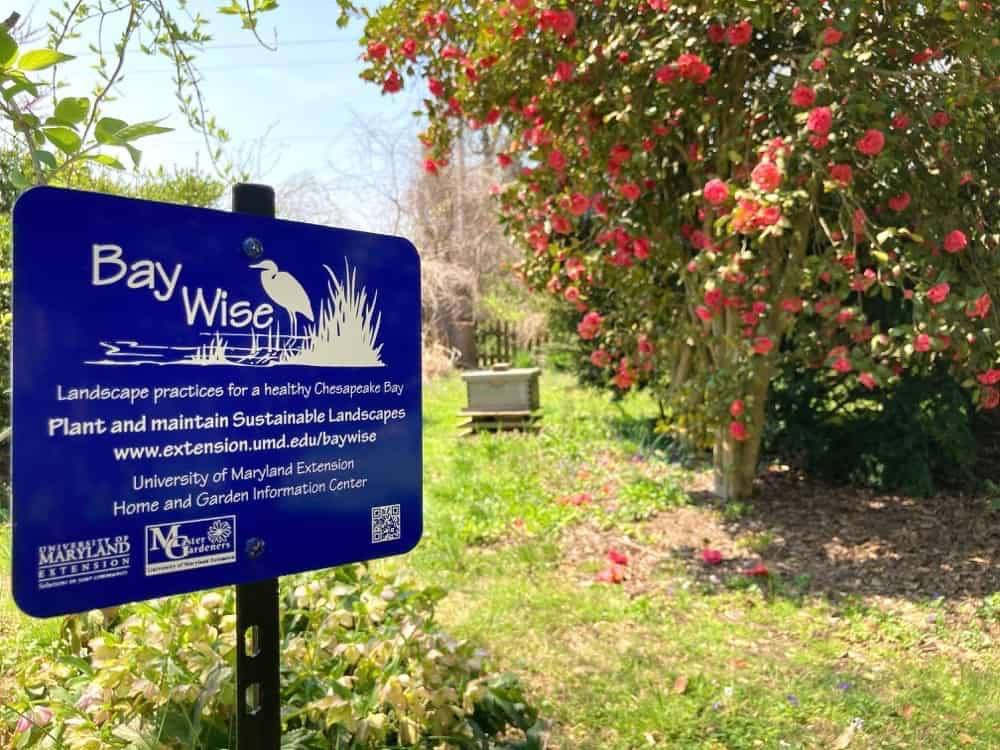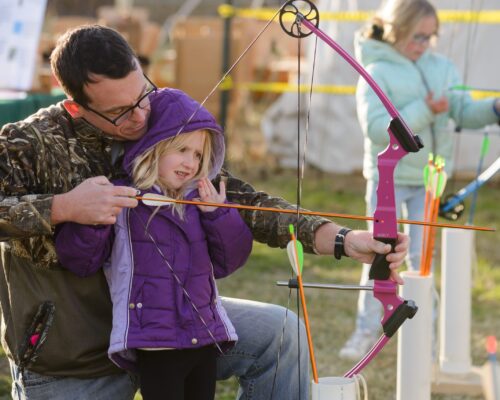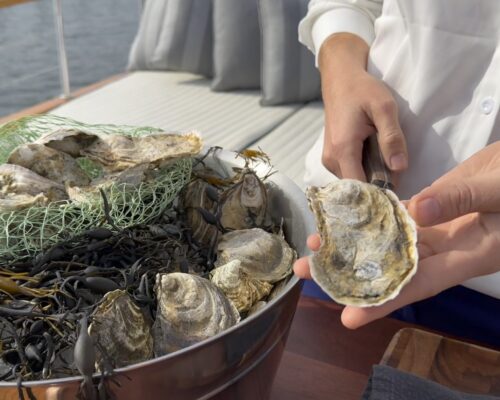There’s a silver lining to the Charlie Foxtrot that was 2020: People discovered gardening. Even those who hadn’t tried to grow herbs (never mind what kind) in college flocked to garden centers and bought a plant or 20. “Victory gardens!” the people said. “Let us eat vegetables!”
But it was more than a culinary impulse. Gardening—cultivating a plant that silently absorbs our angst and returns beauty, fragrance, butterflies, and maybe even salad—is psychologically nourishing. “In some ways, I think people are kind of excited,” says Mikaela Boley, who coordinates the Master Gardener program for Talbot County, Md. But what does that have to do with the Chesapeake? Lots.
“Homeowners are more in tune with what’s going on with their environment and are paying a little more attention to how they can adapt practices to help the Bay,” says Rachel Rhodes, Master Gardener coordinator for Queen Anne’s County, Md.
What we do—or don’t do—on land profoundly affects the health of the Bay, so acting on that knowledge is, as Oprah would say, HUGE.
Bay-Wise, the University of Maryland Extension stewardship program designed 25 years ago by Wanda MacLachlan, offers a straightforward plan. “I wanted to create a holistic approach to [individual] land management,” she explains.
Key to the program is the Bay-Wise Yardstick, which has 61 possible steps, broken into eight categories. Steps taken in one category often offer benefits in others. For example, the native shrubs, trees, ground covers, and grasses you’ve planted to control stormwater runoff (that’s one category) and prevent erosion also act as shelter, habitat, and food source, thus encouraging wildlife (another category). While the Plant Wisely category urges use of protective evergreens to the north and deciduous trees to the south to cut down on energy use, it also provides habitat and draws pollinators and birds (natural integrated pest management, another category) that benefit your victory garden.
Encouraging wildlife also offers enormous entertainment. Take in a troop of 10 cedar waxwings passing a winterberry fruit from one bird to the next on a branch. Watch a fat baby robin test his barely-fledged wings while his nest-bound siblings shout, “Go on! I dare ya!” It’s like a homegrown Discovery channel.
Controlling stormwater runoff by keeping water on your property also saves on your utility bills since you use less water for the landscape and less electricity for the well water pump. Adopted broadly, the cost benefits are multiplied.
Twenty-five years ago, Portland, Ore. was threatened with a lawsuit for polluting the Willamette River. When they realized there was a limit to upsizing the infrastructure, they adopted a greener approach, including green roofs, green streets, and rain gardens. They asked residents to disconnect their downspouts from the storm drain system. The measures significantly diminished runoff and resulted in approximately $65 million in municipal savings. Programs like Bay-Wise were inspired by that success.
Once a property reaches 36 inches on the Bay-Wise Yardstick, the gardener earns a nifty little yard sign to encourage their neighbors to follow suit. And in Charles County, Md., proof of Bay-Wise certification reduces the county watershed fee by 50 percent on one’s property tax bill, in acknowledgment of environmental savings.
Traditionally, properties are certified as Bay-Wise via a visit or two by trained volunteer advisors. They walk around a property with the owner, examining the lay of the land, the exposure, soil type, and plants. In early 2020, in-person visits were suspended, yet Bay-Wise consultations and certifications continue virtually. “Instead of the site visit, they do it via Zoom,” says MacLachlan.
“We had some interns who wanted their gardens certified and were interested in trying it,” says Ellen West, Bay-Wise Chair for Frederick County, Md. Master Gardeners, whose team devised the procedure. At first, they relied on the owner carrying a smart phone around the property, but the signal didn’t always work. “So we decided we needed photographs of specific plants or the vegetable garden or whatever, in addition to the Zoom meeting,” West says.
The Frederick team shared the procedure with the Charles County Bay-Wise team, who did virtual certifications last fall. “I sent [homeowners] the application to fill out,” explains Rose Markham, co-chair for the Charles County committee. “Then I asked them to submit anywhere from three to six high-definition photos and to fill out the Yardstick to tell me what they are already doing.”
In Queen Anne’s County, “we’re doing it via Facetime,” says Rachel Rhodes, “and having the homeowner complete the Yardstick ahead of time.”
The Bay-Wise Yardstick is downloadable from the UMD Extension website and includes the number of inches each step confers (5″ for simply not fertilizing the lawn!), so owners can figure out how close they are to certification before the consultation.
While technology enables the Bay-Wise mission to go forth (and maybe even multiply), Boley says the preliminary consultations—which tend to be detailed, especially for new or inexperienced gardeners—are a bit more challenging to do virtually. “We like to lay eyes on a property, but that’s not always possible,” she says. “We’ve viewed a property from the sidewalk or walk by or drive by, and then called the homeowner and given them the opportunity to show pictures on their phone, or take and mail pictures of the backyard.”
As with all things technological, it works, mostly.
Identifying plants and landscapes from the images on a phone or from slightly out-of-focus photos is not as easy as being there. “Now that we’re getting more photos instead of hard samples, you realize how terrible people are at taking photos,” Boley laughs.
Regardless of the minor headaches, the technology makes continuing the program possible. “It’s nice for our volunteers to have that opportunity without endangering themselves,” says Boley.
Additionally, with this adaptation, Bay-Wise consultants from one county can now certify properties in counties that don’t have a Bay-Wise Committee. That has helped to relieve some of the backlog of applications for Bay-Wise consultations.
“It’s an amazing program,” says Markham. “Once people get into it, they really love it!”




